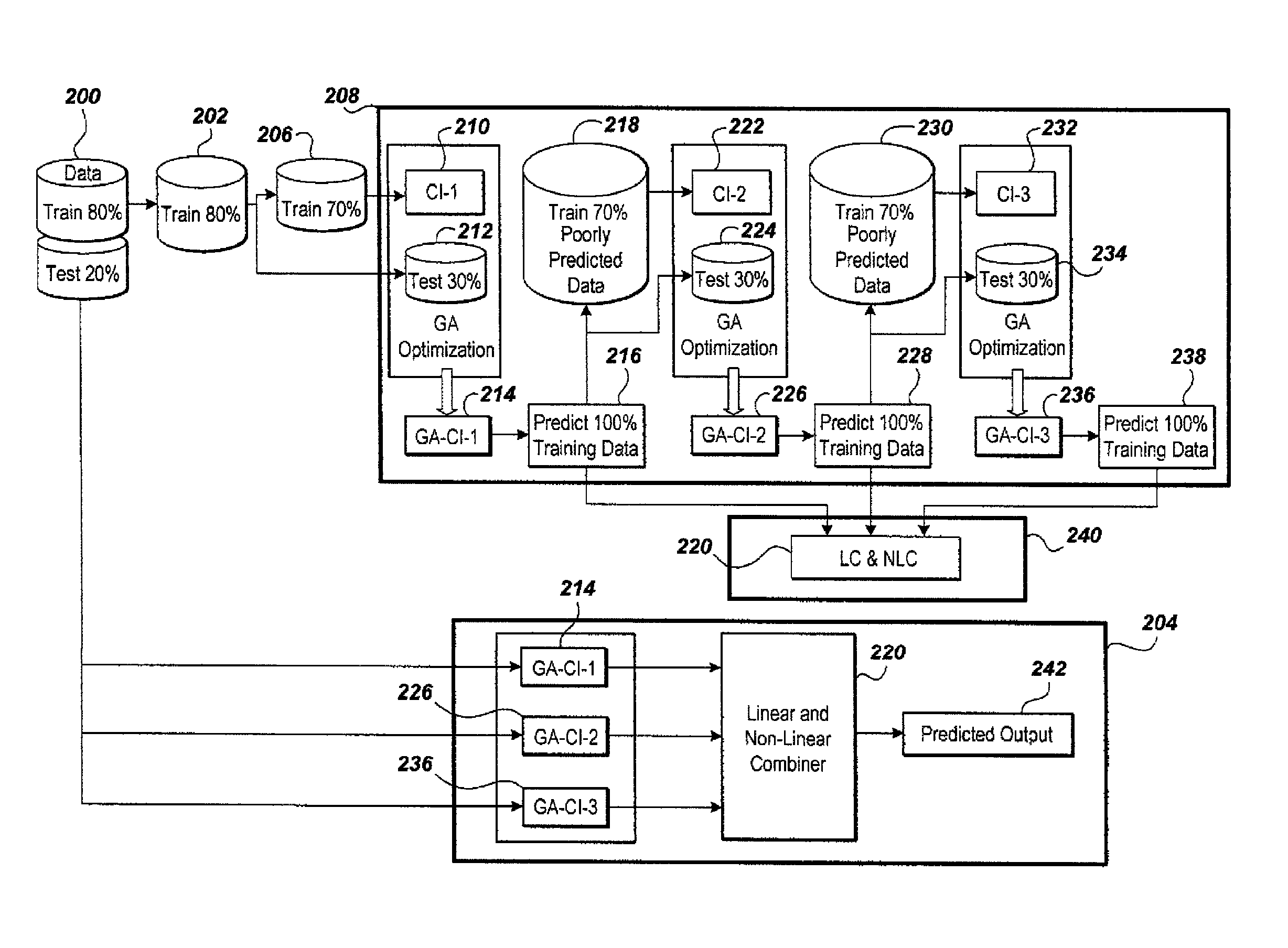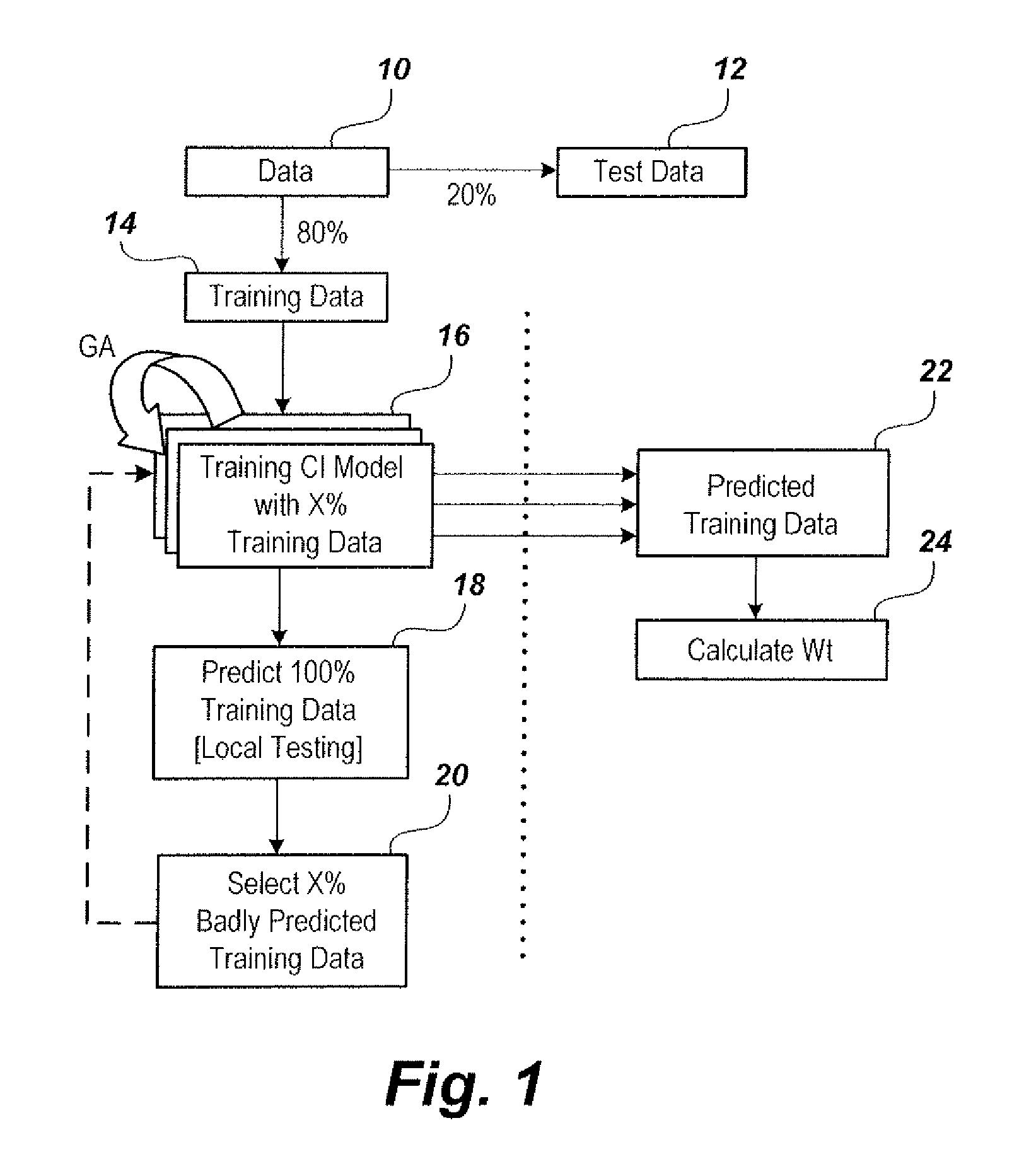Method of predicting gas composition
a gas composition and multi-stage separator technology, applied in the field of predicting gas composition in a multi-stage separator, can solve the problems of difficult non-hydrocarbon prediction of gas composition, no straightforward analytical solution to predict their quantities, and the properties of the mixture may differ considerably
- Summary
- Abstract
- Description
- Claims
- Application Information
AI Technical Summary
Benefits of technology
Problems solved by technology
Method used
Image
Examples
Embodiment Construction
[0153]The method of predicting gas composition relates to predicting gas composition in a multistage separator. Particularly, solutions to the regression problem of gas composition prediction are developed using an ensemble of hybrid computational intelligence (CI) models. Three separate homogeneous models and one heterogeneous ensemble of hybrid computational intelligence (EHCI) models are developed using a parallel scheme. The homogeneous models comprise the same types of CI models used as base learners, and the heterogeneous model comprises different types of CI models used as base learners. Various popular CI models, including multi-layer perceptron (MLP), support vector regression (SVR), and adaptive neuro-fuzzy inference system (ANTIS), are used as base learners of the ensemble models.
[0154]The method combines genetic algorithms (GAs) with each base learner to form hybrid models. The GA optimizes the most crucial parameters of each CI model, the crucial parameters largely bein...
PUM
 Login to View More
Login to View More Abstract
Description
Claims
Application Information
 Login to View More
Login to View More - R&D
- Intellectual Property
- Life Sciences
- Materials
- Tech Scout
- Unparalleled Data Quality
- Higher Quality Content
- 60% Fewer Hallucinations
Browse by: Latest US Patents, China's latest patents, Technical Efficacy Thesaurus, Application Domain, Technology Topic, Popular Technical Reports.
© 2025 PatSnap. All rights reserved.Legal|Privacy policy|Modern Slavery Act Transparency Statement|Sitemap|About US| Contact US: help@patsnap.com



